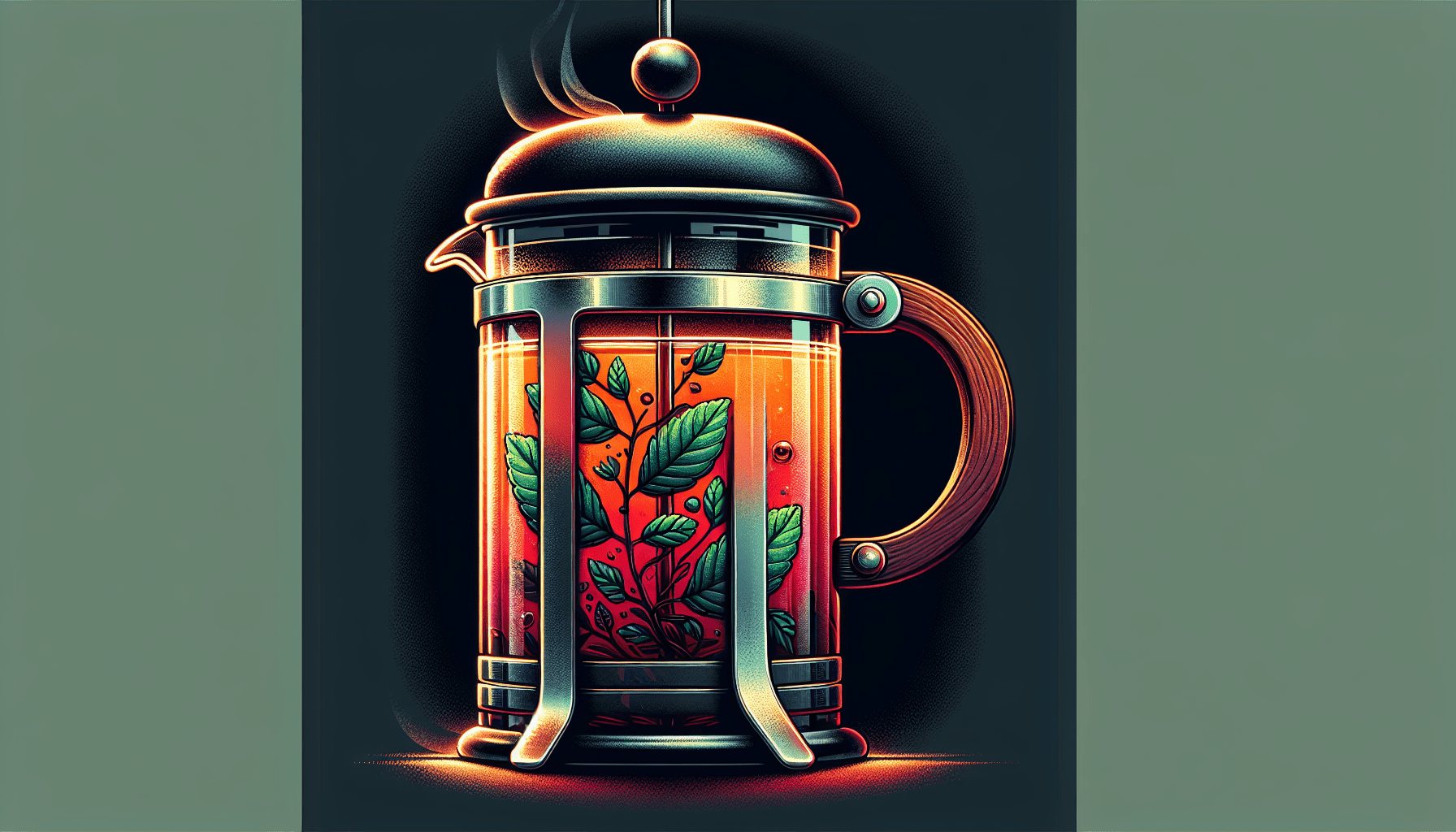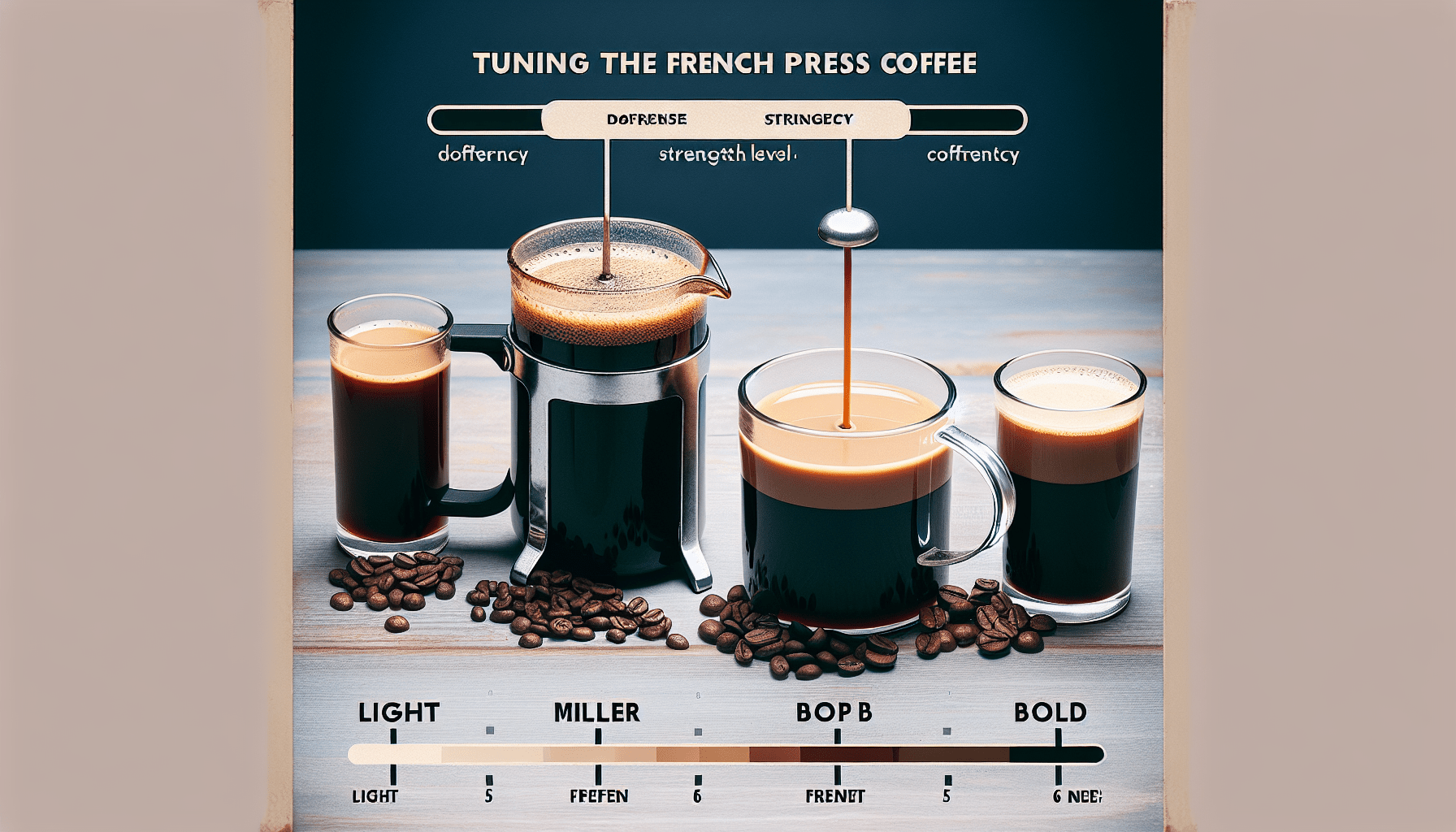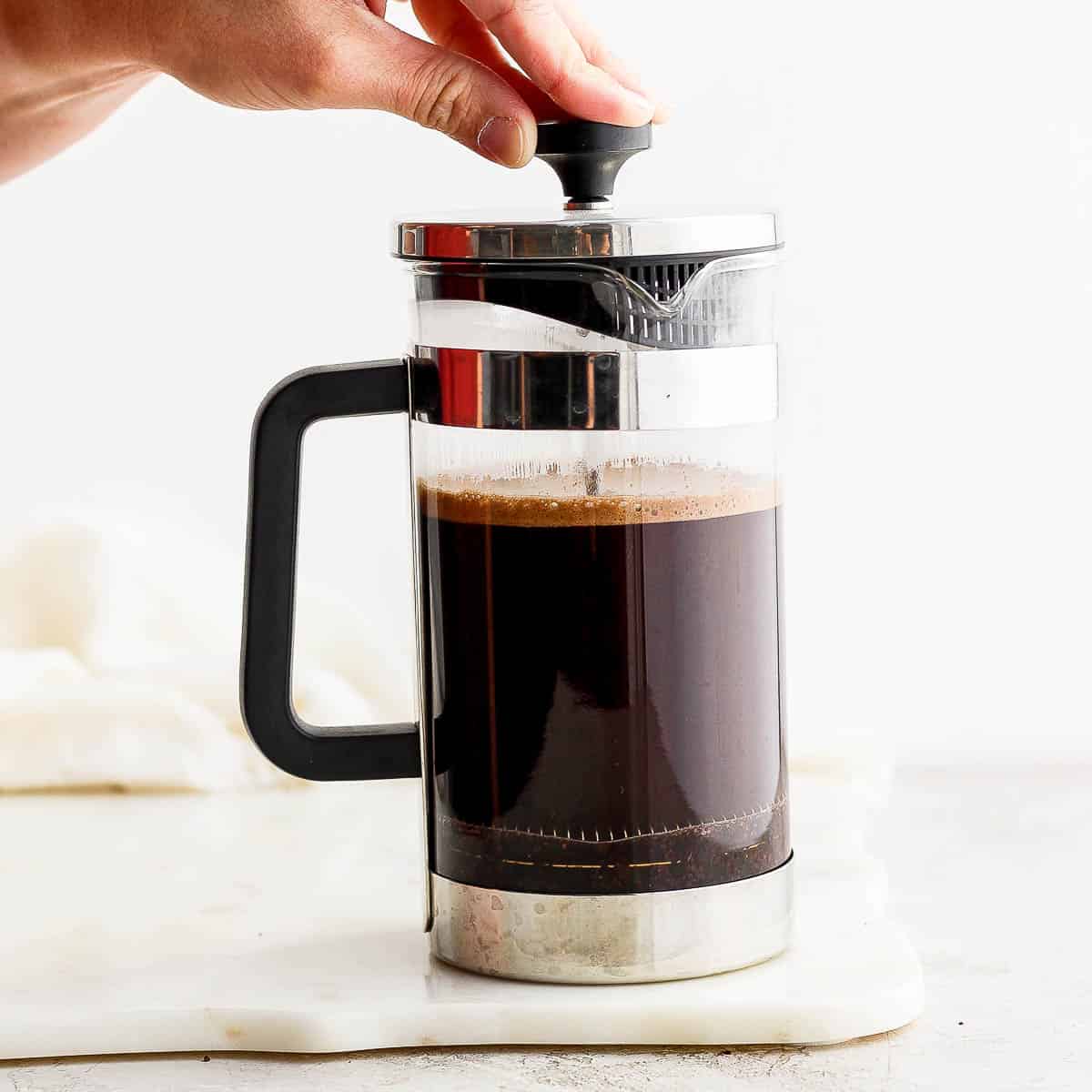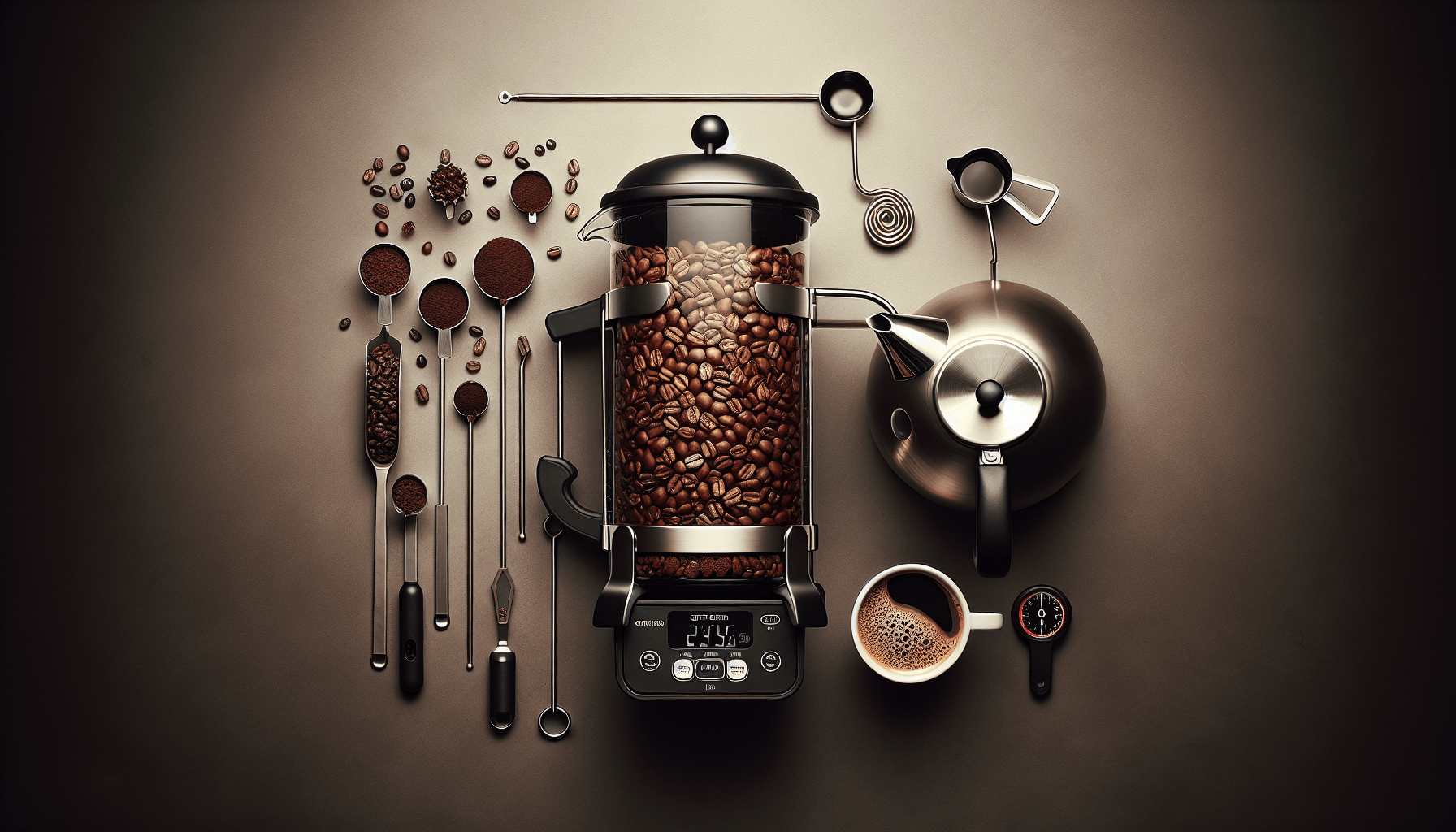Have you ever wondered if you can use a French press for brewing tea? Well, the answer is yes! A French press, traditionally used for making coffee, can also be a versatile tool for steeping delicious tea. With its simple design and easy-to-use mechanism, the French press allows you to enjoy a fresh and flavorful cup of tea in no time. In this article, we will explore the benefits of using a French press for brewing tea and provide some helpful tips to enhance your tea-drinking experience. So grab your favorite tea leaves, and let’s discover the wonders of using a French press for your next cuppa!
Introduction
Explaining the concept of using a French press for brewing tea
If you’re a tea lover, chances are you have tried various methods of brewing tea to find the perfect balance of flavors. But have you ever considered using a French press for brewing tea? You might be surprised to learn that a French press can be an excellent tool for brewing a delicious cup of tea. In this article, we will explore the concept of using a French press for brewing tea, discuss the advantages and disadvantages of this method, provide tips for achieving the perfect brew, and even explore alternative uses of a French press for tea. So, if you’re ready to elevate your tea brewing game, grab your French press and let’s get started!
What is a French Press?
Definition and explanation of a French press
Before we delve into brewing tea with a French press, let’s first understand what a French press actually is. A French press, also known as a press pot or plunger pot, is a brewing device that originated in France in the late 19th century. It consists of a cylindrical glass or stainless steel container, a plunger with a mesh filter, and a lid. The plunger and filter allow for the extraction of flavors from coffee grounds or tea leaves while separating them from the liquid. This simple yet effective design makes the French press a versatile tool for brewing a variety of beverages, including tea.
Brewing Tea in a French Press
Different types of tea suitable for brewing in a French press Steps for brewing tea in a French press
When it comes to brewing tea in a French press, you can use a wide range of teas, including black tea, green tea, herbal tea, and even certain fruit teas. However, it’s important to keep in mind that teas with smaller particles, like finely-cut black teas, may result in more sediment in the final cup. To avoid this, consider using larger leaf teas or placing a fine-mesh strainer over your cup while pouring.
To brew tea in a French press, follow these simple steps:
-
Start by heating your water to the appropriate temperature for the specific type of tea you’re brewing. Different types of tea require different water temperatures to achieve the best flavor. For example, black tea typically requires boiling water, while green tea is best brewed at lower temperatures, around 175°F to 185°F (79°C to 85°C).
-
While the water is heating, add the desired amount of tea leaves or tea bags to the French press. As a general guideline, use approximately one teaspoon of loose tea or one tea bag per cup of water. Adjust the quantity to suit your taste preferences.
-
Once the water has reached the correct temperature, pour it over the tea leaves or tea bags in the French press. Ensure that all the leaves are fully submerged in the water.
-
Place the lid of the French press on top without pressing the plunger down. This will help retain the heat during the steeping process and prevent any unwanted flavors from entering the brew.
-
Allow the tea to steep for the desired amount of time. The steeping time can vary depending on the type of tea and your personal preference. As a general guideline, black teas typically require 3 to 5 minutes, while green teas may only need 2 to 3 minutes.
-
Once the desired steeping time has passed, gently press the plunger down to separate the brewed tea from the leaves or tea bags. The mesh filter will effectively prevent any residue or sediment from entering the final cup.
-
Pour the freshly brewed tea into your favorite teacup or mug, and enjoy!
Advantages of Using a French Press for Brewing Tea
Enhanced flavor extraction Convenience and versatility Ability to control steeping time Ease of cleanup
Using a French press for brewing tea offers several advantages that can enhance your tea drinking experience. Let’s explore some of these advantages in more detail:
Enhanced flavor extraction
The French press allows for effective extraction of flavors from tea leaves, resulting in a more robust and flavorful cup of tea. The mesh filter in the plunger helps retain the essential oils and fine particles that contribute to the overall taste of the tea. This means that you can enjoy the full flavor profile of the tea without any loss during the brewing process.
Convenience and versatility
Using a French press for tea brewing is incredibly convenient and versatile. Unlike other brewing methods that require different accessories or equipment, the French press allows you to brew and serve your tea all in one vessel. This makes it an excellent choice for those who value simplicity and efficiency.
Additionally, the French press can be used not only for brewing tea but also for brewing coffee, making it a versatile tool for both coffee and tea enthusiasts. With just one piece of equipment, you can satisfy your craving for both beverages.
Ability to control steeping time
One of the trickiest aspects of brewing tea is getting the steeping time just right. Steeping too long can result in a bitter and over-extracted tea, while steeping too short may lead to a weak and underdeveloped flavor. With a French press, you have complete control over the steeping time. Simply adjust the time according to your preferences and experiment to find the perfect balance of flavors.
Ease of cleanup
Cleaning up after brewing tea can sometimes be a hassle, especially when using tea infusers or filters. However, with a French press, the cleanup process is quick and effortless. Once you’ve enjoyed your cup of tea, all you need to do is separate the plunger, rinse it, and wash the French press with warm soapy water. The removable plunger and filter make it easy to remove any residue or sediment, ensuring that your French press stays clean and ready for your next brew.
Disadvantages of Using a French Press for Brewing Tea
Possible residue or sediment in the tea Limited capacity for multiple servings
While using a French press for brewing tea offers many advantages, it’s important to consider the potential disadvantages as well. Here are a couple of things to keep in mind:
Possible residue or sediment in the tea
Due to the nature of the French press design, there is a chance of some residue or sediment making its way into the final cup of tea. This can be more noticeable when using teas with smaller particles, such as finely-cut black teas. To minimize this, opt for larger leaf teas or use a separate fine-mesh strainer when pouring the tea into your cup.
Limited capacity for multiple servings
If you’re someone who enjoys brewing tea for a larger group of people or wants to have multiple cups throughout the day, the limited capacity of a French press may be a drawback. Most French presses have a capacity of around 32 ounces (950 ml) or less, which may not be sufficient for larger gatherings or extended tea sessions. In such cases, consider using a larger teapot or brewing multiple smaller batches using the French press.
Recommended Tea-to-Water Ratio for French Press Brewing
Guidelines for achieving the perfect balance of tea and water
Achieving the perfect balance of tea and water is crucial for brewing a delicious cup of tea. While personal preferences may vary, here are some general guidelines for the tea-to-water ratio when using a French press:
- For black tea: Use approximately one teaspoon of loose tea or one tea bag per 8 ounces (240 ml) of water.
- For green tea: Use approximately one teaspoon of loose tea or one tea bag per 8 ounces (240 ml) of water.
- For herbal tea: Use approximately one to two teaspoons of loose tea or one to two tea bags per 8 ounces (240 ml) of water, depending on the desired strength.
- For fruit teas: Use approximately one to two teaspoons of loose tea or one to two tea bags per 8 ounces (240 ml) of water, adjusting according to taste preferences.
Feel free to experiment with the ratio to suit your personal taste. Remember, brewing tea is a creative process, and finding the perfect balance is all about discovering what you enjoy the most.
Tips for Brewing Tea in a French Press
Using loose tea leaves or tea bags Water temperature recommendations Adjusting steeping time for desired strength Experimenting with different teas and flavors
Brewing tea in a French press opens up a world of possibilities for experimentation and customization. Here are a few tips to help you brew the perfect cup of tea using a French press:
Using loose tea leaves or tea bags
When it comes to tea brewing, the choice between loose tea leaves and tea bags is largely personal. Loose tea leaves offer more room for the flavors to infuse the water, resulting in a richer and more nuanced taste. On the other hand, tea bags are convenient and mess-free. Whichever option you choose, ensure that your tea leaves or tea bags are of high quality to achieve the best possible flavor.
Water temperature recommendations
Different types of tea require different water temperatures for optimal flavor extraction. To ensure the best brew, familiarize yourself with the recommended water temperatures for the specific type of tea you’re using. Adjusting the water temperature can greatly influence the taste and aroma of the tea.
Adjusting steeping time for desired strength
The steeping time plays a significant role in determining the strength of your tea. If you prefer a milder flavor, reduce the steeping time, while if you enjoy a stronger brew, extend the steeping time slightly. Remember to consider the type of tea you’re using as each variety may have different recommended steeping times.
Experimenting with different teas and flavors
One of the great things about brewing tea in a French press is the opportunity to experiment with various teas and flavors. Don’t be afraid to try different types of teas, from traditional black and green teas to exotic herbal and fruit blends. Explore the world of tea and find new favorites that suit your taste buds. The French press provides a platform for unlocking an array of flavors and discovering your personal tea preferences.
Alternative Uses of a French Press for Tea
Making cold-brew tea Infusing herbal or fruit teas
Apart from brewing hot tea, a French press can also be used for cold-brew tea and infusing herbal or fruit teas. Let’s explore these alternative uses:
Making cold-brew tea
Cold-brew tea is a refreshing and delightful way to enjoy your favorite tea, especially during the hot summer months. To make cold-brew tea using a French press, simply follow the same steps as for hot tea brewing, but use cold water instead. Let the tea steep in the refrigerator for several hours or overnight, and then press the plunger down to separate the tea leaves or tea bags from the liquid. The result is a smooth and naturally sweet cold-brew tea that is perfect for sipping on a sunny day.
Infusing herbal or fruit teas
Herbal and fruit teas often require a longer steeping time to extract their flavors fully. Using a French press for these types of teas allows for a more extended infusion period, resulting in a more robust flavor profile. Experiment with different combinations and infuse your herbal or fruit teas in a French press to enjoy the vibrant and aromatic brews they offer.
Cleaning and Maintenance of a French Press for Tea
Proper cleaning techniques Preventing buildup and odors
To ensure the longevity and performance of your French press for brewing tea, proper cleaning and maintenance are important. Here are some tips to keep your French press in top shape:
Proper cleaning techniques
After using your French press, separate the plunger and filter from the container. Rinse them with warm water to remove any leftover residue. Then, using a mild dish soap, wash the French press with soapy water. Pay attention to the mesh filter and any nooks or crannies where residue may accumulate. Rinse thoroughly to remove all soap traces.
Preventing buildup and odors
To prevent buildup and odors in your French press, consider giving it an occasional deep clean. Fill the container with a mixture of equal parts vinegar and water, and let it sit for a few hours. This will help dissolve any residue or buildup that may have accumulated over time. Afterward, rinse thoroughly with warm water and wash with dish soap as usual. This deep cleaning method can help keep your French press sparkling clean and odor-free.
Additionally, it’s important to note that stainless steel French presses for tea brewing are generally easier to maintain and clean compared to glass ones. Stainless steel is less prone to staining and can withstand more aggressive cleaning methods if needed.
Conclusion
Summarizing the benefits and considerations of using a French press for brewing tea
Using a French press for brewing tea can be a game-changer for tea enthusiasts. It offers enhanced flavor extraction, convenience, and versatility, as well as the ability to control steeping time and ease of cleanup. While there are some potential disadvantages, such as the possibility of residue or sediment in the tea and limited capacity for multiple servings, these can be managed by using appropriate tea types and adjusting brewing techniques.
By following the recommended tea-to-water ratio, experimenting with different teas and flavors, and exploring alternative uses like cold-brew tea and infusions, you can unlock a whole new world of tea enjoyment with your French press. Just remember to clean and maintain your French press properly to ensure optimal performance and longevity.
So, the next time you’re craving a cup of tea, consider dusting off your French press and giving it a try. You might be pleasantly surprised by the rich, flavorful brew it produces. Happy brewing!




